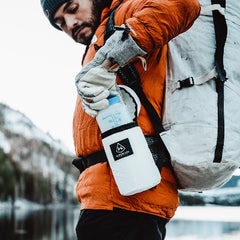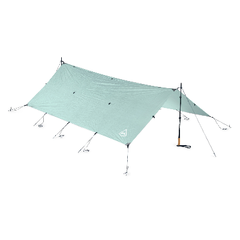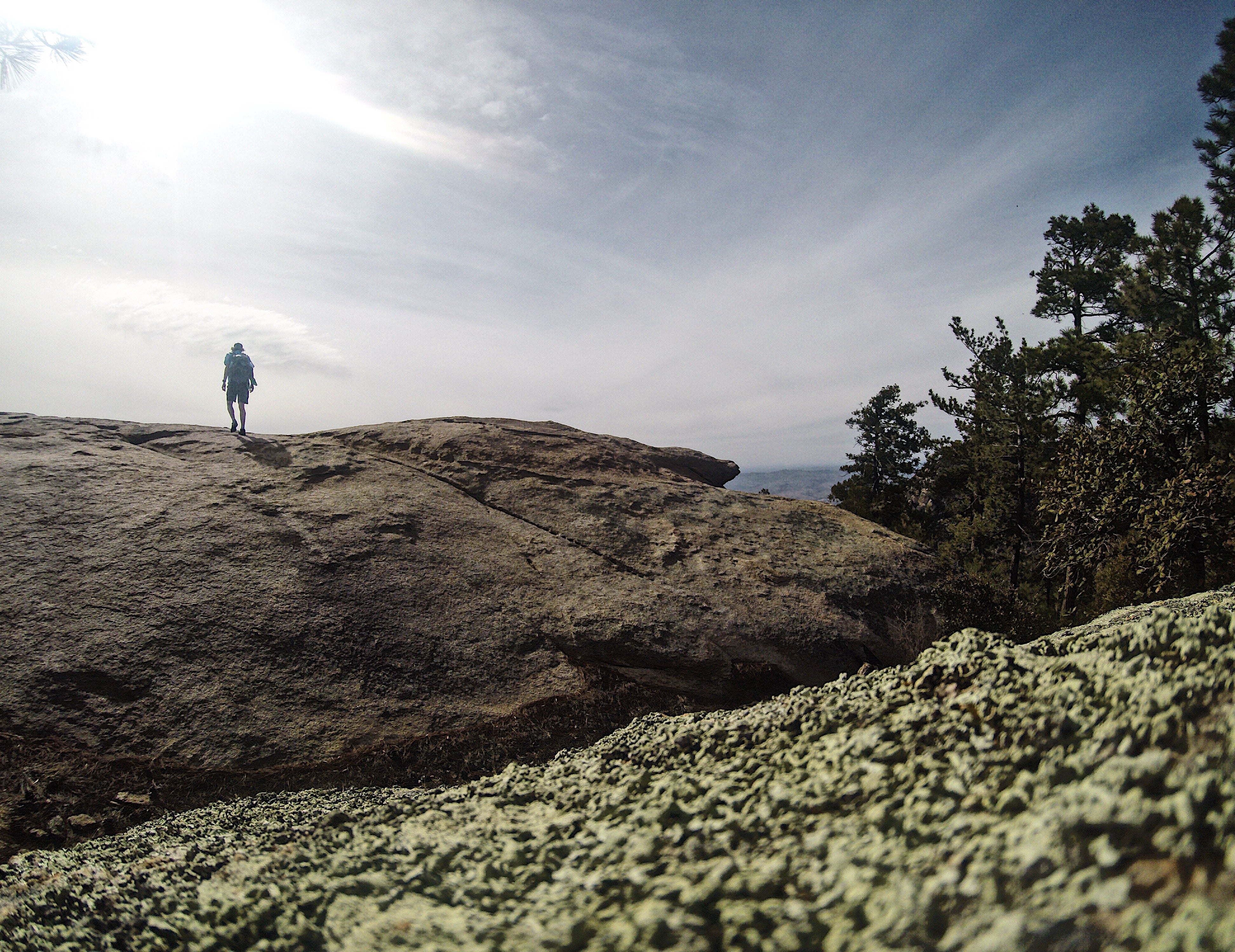Words & Photos from Michael DeYoung
A person can have all the top-of-the-line backpacking gear. However, good equipment doesn’t guarantee a smooth and successful adventure, nor does it compensate for experience, knowledge, and judgment. The pursuit of excellence in photography is no different. Real growth as a photographer is mostly about creativity and the art of seeing. Great and compelling photography is about the impact and not the effort. Impact comes from light and design, not from megapixels and the latest and greatest cameras and lenses. These tips and best practices mainly address the creative side of photography, and suggestions for fall color photography don’t differ that much from recommendations for other seasons.
EQUIPMENT TIPS
Polarizers Are Very Useful for Fall Foliage Photography. Polarizers (most modern cameras require circular polarizers, CPL, for metering systems to function properly.) CPL’s are not just for darkening blue skies at right angles to the sun’s position. I mainly use CPL’s to remove glare from wet or shiny vegetation and off wet rocks in water. This helps maximize color saturation of fall colors and clear water. Saturating in post-processing does not have the same effect or quality as polarizing your light on location.
 Clearing storms with new snow in high mountains bring the best quality light for landscape photography. Follow storm cycles and make sure you are at a target rich location when the clearing storm takes place. Chugach Mountain reflection, Six-Mile Lake, Alaska.
Clearing storms with new snow in high mountains bring the best quality light for landscape photography. Follow storm cycles and make sure you are at a target rich location when the clearing storm takes place. Chugach Mountain reflection, Six-Mile Lake, Alaska.
Overexpose And Check That Histogram! I hear too many shooters complain that their pictures are always too dark. You need to understand how cameras meter reflected light–it tries to make everything a middle tone. Most landscape photography subjects are brighter than middle tone, including bright fall foliage, water, sky, and snow. It may seem counterintuitive but add light to bright scenes. To do this, get your camera off full program mode! Learn to use exposure compensation or do it with full manual exposure control.
 For those who live or visit the north country, fall brings back more frequent displays of aurora borealis as the nights lengthen. Tangle Lakes, Alaska.
For those who live or visit the north country, fall brings back more frequent displays of aurora borealis as the nights lengthen. Tangle Lakes, Alaska.
CREATIVE TIPS
Follow The Light! Match Your Subject Matter to The Given Light. A highly polished lighting skill for any outdoor photographer is learning to match your subject matter to the given lighting. Big scenics with lots of sky, water, fall trees, and mountains work best in low-angle direct sunlight, mostly at the beginning and end of the day. The further north you go, the better the light is on sunny days as the sun angle at high latitudes (Alaska vs. Colorado) remains lower and delivers better quality light. Forest interior scenes and bodies of water, including waterfalls, photograph better in flat light and even rain and mist. If you live in the north country or high elevation mountains in the west, fall is my favorite time of year for dawn through sunrise mist and reflections. Shallow bodies of water warm more in summer’s heat than deep and large bodies do. Cool crisp fall nights produce morning mist and radiation fog over shallow bodies of water that are still warm.
 In lake country of the north or high elevation west, fall marks the return of crisp nights that form radiational fog on warm shallow lakes. Matanuska Valley, Chugach Mountains, Alaska
In lake country of the north or high elevation west, fall marks the return of crisp nights that form radiational fog on warm shallow lakes. Matanuska Valley, Chugach Mountains, Alaska
Shoot More in The Rain-Bad Weather = Great Photos. Follow storm cycles. Your best light is often on the leading edge of approaching storms and on the trailing edge of clearing storms. When I say storms, I am not necessarily talking about small cell rain showers that may only affect a 50 sq. mile area but rather large systems (cold fronts) that affect thousands of square miles of area.
Shoot Fall Foliage in Sidelight or Backlight. Fall leaves, like most vegetation, are translucent and look their best with light coming through them then directly on it from over your shoulder. Fall colors backlit with a dark background really pop and have an impact. Any bright fall colors against a darker background really stand out more. Look for these subject and background juxtapositions in your compositions. For people or wildlife, who are opaque, shooting in backlight requires overexposure of the background to get proper exposure and detail on the person or animal or using supplemental fill light. People or wildlife with backlit fall colors makes great images if you take the time to craft and light them properly.
 Hiking on fall tundra in late August above Alaska’s Matanuska Glacier.
Hiking on fall tundra in late August above Alaska’s Matanuska Glacier.
Shoot More with Telephoto Lenses. Telephoto lenses aren’t just for wildlife and sports photography. They are great tools for fall color photography too! My favorite landscape lens (in full-frame format) is a 70-200. I use this especially with cloudy skies or flat light. Using this short telephoto allows me to compose and concentrate more on patterns, colors, and form and eliminate unflattering featureless clouds that ruin many images. When shooting close-ups of fall leaves, I exploit the shallow depth of field inherent in telephoto lenses and create intentional soft and out-of-focus foregrounds or backgrounds that are full of pleasing color.
 Any flowing water or forest interior photographs better in flat right and in this scene, rain. I use a circular polarizer to cut glare from wet rocks and wet foliage, saturating colors. Using telephoto lenses for landscape imagery, in this case a 70-200 zoom eliminates the sky and draws attention to the rich fall colors. Little Susitna River, Alaska
Any flowing water or forest interior photographs better in flat right and in this scene, rain. I use a circular polarizer to cut glare from wet rocks and wet foliage, saturating colors. Using telephoto lenses for landscape imagery, in this case a 70-200 zoom eliminates the sky and draws attention to the rich fall colors. Little Susitna River, Alaska
Don’t Give Up on Fall Color Photography Past “Peak” Colors. Roads and trails covered with fallen leaves still make captivating images.
 Fallen leaves on roads and trails, shot with telephoto lenses can still make for nice fall color images. Dirt road, Anchorage, Alaska.
Fallen leaves on roads and trails, shot with telephoto lenses can still make for nice fall color images. Dirt road, Anchorage, Alaska.
My favorite fall locations: Fall starts early on the Alaska tundra, with colors peaking in late August to early September on tundra locations such as Denali National Park. Forest colors peak in late September to early October in many Rocky Mountain locations like the San Juan Mountains and Tetons. Fall is fantastic in late October in high desert (4500-6000) areas of the Four Corners region, while lower deserts and lower latitude areas like South Carolina and lower elevations of the Grand Canyon can see spectacular fall colors in November!
Michael DeYoung leads instructional-based photo tours and offers guided private adventure photo trips in Alaska and the Southwest. He also teaches webinars on photography and meteorology for photographers and adventurers too. See more at: www.activephototours.com
Michael is also a former Air Force Meteorologist who has contributed extensively to The Shakedown section of our blog. Make sure to check out his posts here, here, and here. Stay tuned for more in his informative series!


















